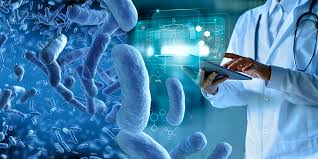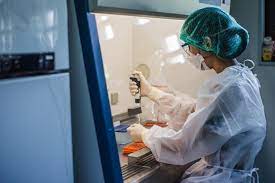Collagen, the most abundant protein in the human body, has long been considered a predictable structural component of tissues. However, a groundbreaking study led by researchers at Rice University and the University of Virginia (UVA) has unveiled an unexpected confirmation in collagen structure that challenges this traditional view and could significantly impact biomedical research.
A Paradigm Shift in Collagen Science
Using advanced cryo-electron microscopy (cryo-EM), the research team—led by Jeffrey Hartgerink and Tracy Yu from Rice University in collaboration with Mark Kreutzberger and Edward Egelman from UVA—discovered a novel collagen assembly that deviates from the traditionally accepted right-handed superhelical twist. Their findings, published on February 3 in ACS Central Science, suggest that collagen’s structural diversity may be far greater than previously believed.
“This work fundamentally changes how we think about collagen,” said Hartgerink, a professor of chemistry and bioengineering at Rice University. “For decades, we have assumed that collagen triple helices always follow a strict structural paradigm. Our findings show that collagen assemblies can adopt a wider range of conformations than previously thought.”
Unveiling a New Collagen Conformation
To analyze collagen assembly at an atomic level, the research team developed a system of self-assembling peptides based on the collagen-like region of C1q, a key immune protein. By employing cryo-EM, a technique that enables scientists to visualize biomolecules in unprecedented detail, they uncovered a structural deviation from the standard right-handed superhelical twist.
This unexpected collagen conformation facilitates unique molecular interactions, such as hydroxyproline stacking between adjacent helices and the formation of a symmetrical hydrophobic cavity. These features indicate that collagenous assemblies may be far more structurally diverse than previously assumed.
“The absence of the superhelical twist allows for molecular interactions not seen before in collagen,” said Yu, a former graduate student of Hartgerink who is now a postdoctoral researcher at the University of Washington.
Kreutzberger, the study’s first author, emphasized the significance of the discovery. “It challenges the long-held dogma about collagen structure and opens the door to re-examining its biological roles,” he said.
Implications for Medicine and Biomaterials
Beyond its structural role, collagen is critical in various biological processes, including cell signaling, immune function, and tissue repair. This discovery may provide new insights into diseases associated with collagen assembly defects, such as Ehlers-Danlos syndrome, fibrosis, and certain cancers.
Additionally, the findings could advance the development of biomaterials and regenerative medicine. By harnessing the unique structural properties of this newly identified collagen conformation, scientists may design innovative materials for wound healing, tissue engineering, and drug delivery.
Cryo-EM’s Breakthrough in Structural Biology
Despite collagen’s prominence in human biology, studying its higher-order structures at high resolution has been challenging. Traditional techniques such as X-ray crystallography and fiber diffraction have provided valuable insights but have struggled to capture complex collagen assemblies. Cryo-EM has overcome these limitations, enabling researchers to visualize collagen’s intricate architecture with unprecedented clarity.
“Our research refines our understanding of collagen and highlights the importance of re-examining other biological structures previously thought to be well understood,” said Egelman, a co-corresponding author of the study.
Research and Funding Acknowledgments
The study’s co-authors include Michael Purdy of UVA, Thi Bui and Maria Hancu from Rice University’s Department of Chemistry, Tomasz Osinski from the University of Southern California, and Peter Kasson from the Georgia Institute of Technology.
This research was supported by funding from the U.S. National Science Foundation Division of Chemistry, The Robert A. Welch Foundation, and the National Institute of General Medical Sciences.
Disclaimer: The information presented in this article is based on scientific findings and should not be used for medical diagnosis or treatment without professional consultation. Further research is necessary to fully understand the implications of this discovery in clinical and biomedical applications.












